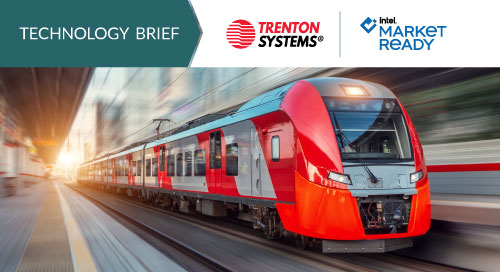Edge Computing Makes Smart Decisions on the Fly

Picture a tractor driving through thousands of acres of cornfields. As it turns down one row, a small computer vision camera calculates that last season’s yield in this particular spot was 20% below normal. In the blink of an eye, the camera’s computer sends a message to a spray nozzle, which adjusts the fertilizer mix to boost deficient nutrients. At the same time, another camera spots a weed on the ground below, activating a nozzle to zap it without flooding the entire row with herbicide.
The same process is repeated in fields throughout the day, and because this tractor is an automated vehicle, it continues into the night, saving countless hours of human labor and delivering precision care farmers could only dream about a few years ago.
That’s the value of edge computing, which enables companies in agriculture, telecommunications, finance, healthcare, and many other industries to boost productivity and make better real-time decisions based on reams of past data and ongoing conditions. But making edge solutions work involves more than simply attaching smart cameras and sensors to machinery.
“Edge computing introduces many unknown variables,” says Yazz Krdzalic, Vice President of Marketing for Trenton Systems, which builds high-performance, ruggedized computing solutions and critical infrastructure.
Spotty connections and data lags can foul up results, and equipment unsuitable for harsh conditions can break down. The constant transmission of data introduces cybersecurity risks. An effective edge computing solution must solve all of these problems while providing up-to-date information tailored to suit an organization’s specific needs in the field, factory, or hospital.
Solving challenges of #edge computing for today’s industries will lay the foundation for tomorrow’s connected societies. @TrentonSystems via @insightdottech
Building for the Edge
To develop custom edge solutions for its clients, Trenton works with Intel® engineers to assemble computers using Intel® Xeon® Scalable processors, which support AI capabilities, and Intel® Xeon® D processors, which optimize performance in the constrained environment of field equipment.
Working closely with Intel allows Trenton to incorporate new advanced computing features into its products before they are released to the public. “That’s a huge benefit to our customers. We’re future-proofing our technology, so they don’t have to worry about having an outdated system,” says Krdzalic.
Advanced edge deployments include capabilities such as predictive AI. For example, if a hospital analyzes all the vital data it collects from patients—blood pressure, respiration, oxygen levels, etc.—AI algorithms can predict at a glance when patients will be released and how many new beds will become available at a given time. “The hospital can decide which actions to take based on constantly updated information,” Krdzalic says.
Computer vision systems can also make real-time predictions. For example, smart cameras placed by railroad tracks can snap dozens of photos of the upper, middle, and lower parts of a train as it nears the station. They analyze the data to detect defects and determine the probability that they warrant an immediate fix. Often, the chance of serious problems is extremely low, allowing the train to continue on its journey without stopping while meeting the railroad’s requirement for passing a physical inspection every four hours.
Securing Every Portal
In addition to facilitating high-performance computing, edge devices must secure terabytes of data flying back and forth. Trenton builds all its products to the strictest U.S. government top-secret cybersecurity standards. “If it meets U.S. government standards, it usually meets everybody else’s, too,” he says.
Intel’s processors provide built-in security, and Trenton supplements it by encrypting data at rest, in transit, and in use. “We protect every door you have, greatly reducing the attack surface for hackers,” Krdzalic says. The company also ensures that all critical systems have one or multiple secure backups in case of network failure.
Ruggedized Field Equipment
No matter how secure an edge device is or how lightning-fast it performs computations, in industries such as manufacturing, construction, and transportation, it’s useless unless it can hold up in the field. Those computer vision cameras lying just feet away from railroad tracks must be able to withstand the vibrations of trains whizzing by at 120 miles per hour. Earth-moving machinery in the desert must continue to operate in harsh environments like sandstorms and extreme temperatures.
For that reason, Trenton stress-tests every piece of equipment it builds, Krdzalic says: “Our engineers really beat up the systems before they leave our facility. We subject them to shock vibrations, humidity, temperature fluctuations, sand, dust, fog, debris, and other tough conditions simulating field use.”
The Future: Edge Computing Everywhere
As connected devices proliferate and 5G unleashes new capabilities, Krdzalic believes the demand for edge computing is bound to increase: “Imagine a smart city. You’ve got every IoT device talking to every other IoT device. Your phone may be unlocking your house or your car. Your refrigerator may tell you which goods are running low. How do we deal with the influx of all this data and make sense of it? How do we keep it from getting into the wrong hands?”
These are the challenges of edge computing. Solving them for today’s industries will lay the foundation for tomorrow’s connected societies.
Listen to a conversation with Krdzalic on the insight.tech IoT Chat Podcast on AI, Security, 5G: New Intel® Xeon® Processors for IoT.